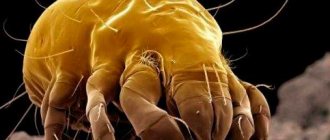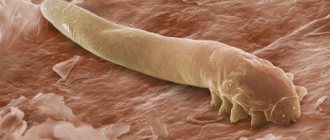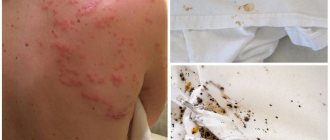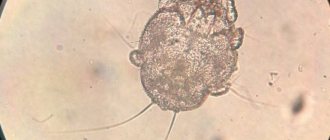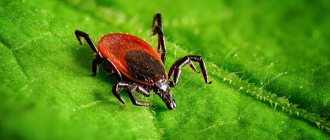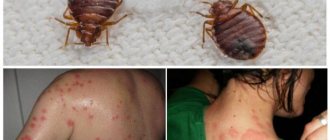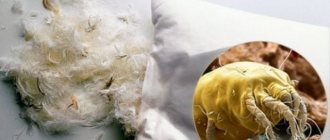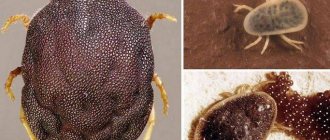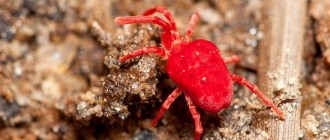Those who have summer cottages located near the forest often have to be a victim of ticks. Small insects, and what harm they bring to humans! After all, they are the carriers of such dangerous diseases as tick-borne encephalitis and tick-borne borreliosis, which sometimes lead to disability.
Few people are happy with such neighbors. Every year we have to reclaim our territory from the invasion of insects, but they appear again and again. And sometimes it is very difficult to cope with them. However, there are simple and effective ways to help get rid of ticks in your area. Then how to protect yourself and your children from tick-borne infections, the carriers of which are ixodid ticks? This is what we're talking about today.
How dangerous are ticks for humans?
Ixodid ticks are carriers of tick-borne encephalitis virus and Lyme disease borrelia (tick-borne borreliosis).
Tick-borne encephalitis
It is severe with the manifestation of symptoms of intoxication (severe headaches and muscle pain, vomiting, weakness, sleep disturbance, fever to high levels). The disease develops on average 7-10 days after the bite. But the incubation period can be extended to 21 days and shortened to 2-3 days. It all depends on the number of viruses that have entered the body, the virulence of the virus itself, the person’s body’s resistance to infection and many other factors.
But encephalitis is especially dangerous due to its complications. And although at present there are almost no deaths, however, after the illness there remain such terrible complications as paralysis and paresis of the limbs, which remain for life and lead to disability.
You can prevent infection by getting vaccinated against tick-borne encephalitis on time. Such vaccinations are given at any clinic or medical center.
Tick-borne borreliosis
This is a systemic disease that affects different organs and systems - skin, nervous system, musculoskeletal system, cardiovascular system, eyes, liver, spleen. The disease develops 2-3 weeks after a tick bite. A characteristic sign of the disease is creeping erythema: a red spot appears at the site of the bite, which increases over time.
The disease is characterized by intoxication and symptoms associated with the affected organ. The disease is characterized by relapses. Unlike tick-borne encephalitis, there are no vaccinations against this infection; a vaccine has not yet been developed.
Mistakes made when exterminating ticks in the country
Many summer residents make the following mistakes when baiting ticks, which are gaining popularity:
- Exceeding the permissible possible dose of chemicals leads to intoxication of the human body and animals, as well as harm to the future harvest.
- Incorrect timing of sprinkling. Favorable conditions: sunny and dry weather. No later than 40 days before harvest.
- Starting the procedure without first cleaning the area (removing litter, mowing grass).
How does infection occur?
One thing needs to be taken into account. The tick does not attach itself immediately. Having attacked a person, it crawls over clothes for some time and looks for a place where it could get on the person’s skin. Once on the skin, the insect also does not immediately attach itself, but looks for the most convenient places for suction. This can be the skin of the armpits, thighs, genitals, on the head, neck, behind the ears, that is, places with the thinnest and most delicate skin.
The person does not feel the moment of suction, since the bite injects an anesthetic substance along with saliva. Sometimes, after sucking blood, the tick disappears on its own. Only sometimes there is soreness and redness in this place.
However, not every tick can be a source of infection. Externally, it is impossible to distinguish an infected insect from a non-infected one. Therefore, if you notice ticks in your area, be sure to take measures to combat them. Especially if your summer cottage is located next to a forest.
Reasons for the appearance of ticks in a summer cottage
The following can be distinguished:
- Food shortage, stimulating the search for new places. In a day they can cover distances of 10 m to find food.
- Placing a summer cottage near a forest.
- The appearance of parasites among neighbors.
- Bringing them in with the help of pets.
- When purchasing a plot, there is a risk of ticks. If they appear after 18-24 months, they were present initially, since their eggs mature during this time.
How to protect yourself from ticks
There are many ways to protect yourself from ticks when you go to the forest, hike, relax in nature, or work in your summer cottage.
How to protect yourself from ticks in the forest
Ticks wait for their prey on tall grass and bush branches along paths and roads. This means that the task of any person going about his business in the forest is to dress appropriately so that insects do not have a chance to crawl onto your skin.
- Dress appropriately. Put a scarf or mosquito net on your head, tighten the sleeves of your jacket with an elastic band and a tight cuff. Tuck your trousers into boots or shoes;
- Use repellents—means that repel midges, mosquitoes, ticks, and horseflies. A large assortment of these products is available in any store and pharmacy. The ticks “having smelled the chemicals” weaken and fall off on their own without having time to attach themselves;
- Knowing that ticks do not attach immediately, regularly, every hour or two, conduct self- or mutual examinations. Do not crush detected insects under any circumstances: there may be tiny wounds on your fingers through which the virus can enter the blood. This is how you can get infected too. Place the detected tick in a matchbox or in a vial so that you can send it to the laboratory for examination. Or just burn it.
How to protect yourself from ticks in nature
When going on vacation in nature, do not forget about these simple rules.
- Choose a place to rest away from dead wood and tall grass;
- Choose a place to rest on a large sunny lawn, where there is no tall grass and it is well blown by the wind;
- Don't forget about repellents.
As a rule, dogs are taken with them into nature. They are unlikely to sit next to you. After running through the forest, they will definitely bring you ticks on their fur. Treat your dog's fur with repellent. And when returning home, carefully examine the dog's fur.
When picking a bouquet of wildflowers and birch branches for a broom to take a steam bath in the bathhouse, be careful. It is with flowers and branches that ticks are brought into the apartment. Then they wonder: how did a small child, who had never been in the forest, get bitten by a tick? Therefore, before you bring flowers or branches home, keep them outside in the sun for a while. And it’s best not to bring such plants into the apartment at all.
How to deal with ticks in the countryside
When the forest is next to a summer cottage or vegetable garden, it is very convenient. There is no need to travel far for berries and mushrooms. However, there is a danger of tick bites. Insect attacks can be prevented by following these tips.
- Before the start of the summer season, first clear the area of remaining old branches and dried grass;
- In autumn, remove leaves under trees and shrubs; ticks and other pests may remain there for the winter;
- Mow the grass more often and remove weeds from the beds, especially since all this can be used for compost, hot grass, or for mulching;
- The most reliable and effective way to protect yourself from ticks on your property is to treat the nearby forest area and your property with special preparations—repellents. Such treatments are carried out by a special sanitary service. Or, after consultation with specialists, the treatment is carried out by the owners of the dachas themselves.
How to protect yourself from ticks - folk remedies
Any blood-sucking insects do not like strong odors, for example, the smell of cinnamon, cloves, camphor, Chinese star balm and even triple cologne.
- You can make your own oil from cinnamon and cloves. For this purpose, add 1 teaspoon of ground cinnamon or 10 cloves to 100 ml of warm vegetable oil. Let it brew in a warm place for several days. Before going out into the forest, going on a hike, or working in the country, lubricate exposed parts of the body with this oil.
- In 1 liter of water put 1 tbsp. l. ground cinnamon or cloves, boil a piece of gauze in this solution. Without rinsing, wring out the gauze and dry. Wear gauze like a scarf before going into the forest or working in the garden.
- While relaxing in nature, place around sharp-smelling plants (wormwood, tansy, lilac, geranium, lavender), branches of rowan, and flowering bird cherry. They will not only repel ticks, but also mosquitoes.
- Use essential oils. Dissolve ½ teaspoon of clove, fir, eucalyptus, or tea tree oil in half a glass of warm water. Lubricate exposed areas of the body with the mixture, and spray the remainder onto clothing. Apple cider vinegar, onion and garlic juice have similar properties.
- When you see an anthill in the forest, take off your outer clothing and place it on the anthill for 10-15 minutes. Afterwards, shake off the ants thoroughly. You can buy formic alcohol at the pharmacy.
Effect of poison
Treating the area against ticks
Treating the area against ticks must be carried out according to certain rules. Otherwise, it will cause harm to the environment, animal health, and human health. All chemical preparations for spraying the lawn, garden, yard, and meadow are based on a broad-spectrum insecticide. The active components are classified as medium or low toxic substances and do not cause harm under certain conditions.
Acaricidal treatment against ticks cannot be narrowly targeted. Almost all insects that find themselves within the radius of action of the poison die from the action of the poison. Spraying the area is safe for animals if they do not run on the poisoned grass or climb treated bushes for 3 days. Otherwise, an allergic reaction to the skin, increased salivation, lacrimation, loss of appetite, and vomiting may occur.
The product used to treat an area against ticks penetrates the ticks' body through contact. Causes disruption of the functioning of the nervous system, blocks the transmission of impulses. This leads to muscle paralysis and quick death. Tick poison is effective for a maximum of 3 days, then the toxicity gradually decreases, but remains sufficient to bait bloodsuckers for 1-3 months.
Important!
Anti-mite treatment should not be carried out in the garden during the fruit ripening season. If spraying has occurred, the crop should be harvested no earlier than after 21 days.
When poisoning ticks, you need to wear a special suit, a respirator, rubber gloves, and goggles. When poison gets on the skin, an allergic reaction appears in the form of rashes, itching, redness, and in the respiratory tract - intoxication of varying degrees of severity. You may experience dizziness, nausea, headache, chills, vomiting, diarrhea, rapid heartbeat, decreased blood pressure, and other consequences of improper handling of the poison when trying to exterminate parasites.
How to remove a stuck tick
First of all, don't panic! Secondly, try to remove the bloodsucker from the skin. Some people advise lubricating the back of the tick with oil, but this is useless and will not help. Use other methods.
- When removing a tick at home, find tweezers, grab the back of the tick with it and, gently rocking the tick from side to side, carefully remove it from the skin.
- Take an ordinary thread and tie it in a knot around the insect’s proboscis. Move the ends of the thread apart and, pulling the thread alternately in one direction and the other, carefully remove the tick.
- If the proboscis breaks, remove it like an ordinary splinter.
- The tick can be removed using a syringe, the cannula of which is first cut off. The cut end of the syringe (the piston is in the lower position) is placed towards the insect. By lifting the piston up, a vacuum is created in the cavity of the syringe, and the mite is removed. But as practice shows, it is not always possible to extract an insect this way.
- If you are unable to remove the tick yourself, be sure to contact the nearest medical facility, they will help you remove it.
Level of harmfulness of ticks
Is this microscopic pest really that scary? A simple calculation shows that if only 50 larvae survived from each female in the offspring (and she is capable of producing 200 eggs), then with 15 generations per year the number of individuals would cover the globe with a layer of 2 meters. Therefore, even a small initial number of mites in the garden can give rise to a sudden epiphytotic outbreak of pest reproduction and lead to the death of infected crops in the shortest possible time. Bud mites are especially dangerous for plants. Their number in one kidney ranges from 100 or more individuals. Therefore, mites are considered one of the most dangerous plant pests.
Bitten by a tick - what to do?
After removing the attached tick, be sure to treat the wound with any alcohol-containing product (iodine, brilliant green, alcohol wipes, vodka). Remember that the tick should never be crushed. Through microcracks in the skin you can become infected with tick-borne infections.
By the way, you can also become infected with tick-borne encephalitis by consuming unboiled goat milk.
Do not throw away the extracted insect, but put it in a small, tightly closed bottle, and take it to a virology laboratory in your city or town for examination to determine if it is infected with viruses. It is very important.
Victims of a bite must undergo a preventive course of treatment. To prevent tick-borne encephalitis, iodantipyrine is used, and tick-borne borreliosis is amoxicillin. The medicine is taken according to the regimen described in the instructions for use. From my experience, no one who took medications for preventive purposes suffered from tick-borne infections, even if the ticks tested positive.
And be sure to monitor your well-being for 21 days after the bite. The appearance of fever, headaches and muscle pain, weakness, nausea, vomiting should alert you. In this case, you should immediately consult a doctor.
Chemicals to the rescue
The most reliable and radical remedy against ticks is modern aggressive chemical compounds. These include the following:
- Envidor;
- Sunmite;
- Bi-58;
- Thiovit Jet;
- Ram;
- Digital;
- Dobrokhim.
The listed drugs almost instantly kill not only adults, but also their larvae. But when working with chemicals, it is important to follow these rules:
- Processing is carried out only in protective clothing (long-sleeved shirt, trousers, headscarf, protective mask and gloves);
- Do not use food containers for diluting the composition;
- It is forbidden to pollinate the area on a windy day;
- Spraying is carried out in the morning after the dew has disappeared or in the evening;
- During the flowering period of plants, ticks cannot be baited with chemicals;
- For two to four days after spraying, you need to protect pets and children from walking around the area. It is not advisable to release bees either;
- When processing, it is important to ensure that chemicals do not get into the well, well, or other source of water on the site;
- It is recommended to wait 20-45 days after irrigation before harvesting;
- You cannot spray the land more than twice a season, otherwise the plants will burn;
- Irrigation with chemicals is best done in May-April and October-November.
- It is strictly prohibited to increase the dosage of the drug per unit area.
To make the event more effective, you must first remove all construction and plant debris from the site. Otherwise, the tick will escape there during the treatment period. The result of spraying will be zero.
Important: for the purpose of prevention, the use of chemical agents against ticks is strictly prohibited.
What to do if a tick bites a child
If a child is bitten by a tick, it is necessary to carry out the same steps as for adults. Make sure to submit the tick for examination.
Monitor your child's well-being for the first 3 weeks after suction. Any deviation in the child’s health should be alarming; in such cases, the child is immediately shown to a doctor.
In addition, for preventive purposes, children are given free anti-tick immunoglobulin at a medical institution at the rate of 0.1 ml per 1 kg of child weight. The introduction of immunoglobulin provides protection for the first time, since ready-made antibodies are introduced. In the future, if there is a threat of ticks being sucked on again, it is better to undergo a course of preventive vaccinations. Vaccinations in endemic areas are carried out from the age of three.
Signs of a plant being damaged by garden mites
Common signs of damage by garden mites are wilting of the plant, curling of the leaves without visible damage. When carefully examining the leaf blade of garden plants, on the underside of the leaf blade, under a magnifying glass, you can notice tiny yellowish or white dots - puncture sites of the mite. Individual points in the shortest possible time merge into spots clearly visible to the naked eye, and the shoots with leaves are still shrouded in a thin, barely noticeable web, sometimes as thick as felt. If there is a large accumulation of pests on the underside of the leaves, you may notice very small grayish dry skins (like dandruff). These are the remains of the larvae after molting. The web serves as protection for the pest from the effects of natural enemies and drugs. Each species has distinctive signs of the damage it causes, which allows you to immediately determine what type of mite has settled on the plants.
Signs of plant damage by spider mites
The most famous and widespread are spider mites (Tetranychidae). There are more than 1,200 species of spider mites, found everywhere, including Antarctica. Very small insects. Males 0.3-0.6 mm, females up to 1.0 mm. The yellow-green color matching the color of the foliage allows ticks to lead a secretive lifestyle. Leaf blades damaged by spider mites become brownish-brown, curl and fall off. In autumn, the female lays up to 10-12 eggs per day.
Over the course of a year, in regions with a long warm period, up to 25 generations of spider mites hatch. The eggs are attached by a web to the stems of weeds. Spider mites can destroy up to 80% of the crop (for example, Grape itch, or Felt mite). According to experts, the pest is a carrier of gray rot diseases and viral infections of agricultural and ornamental crops.
Plant buds affected by bud mite. © otokkatieto
Signs of gall mite infestation
Anatomically, gall mites (Eriophyidae) differ from brown and spider mites in the absence of hind legs. This species has only 2 anterior pairs, the posterior ones are atrophied. Favorite garden crops are cherry plum, pear, plum. Damaged leaves form growths of galls, in which the mite is located “with all the comforts.” The leaf itself becomes covered with pimples and curls. The tick lives and reproduces in the galls throughout the warm season. If gall “houses” are visible in a dried, unrolled leaf, it means the plants are affected by gall mites. If such branches are found on trees and bushes, they must be carefully cut off and burned. The presence of a gall mite is also indicated by “witches’ brooms”, which are bunches of sterile shoots with underdeveloped leaves.
Signs of brown garden mite infestation
The brown tick's favorite habitats are garden crops, with particular preference given to apple trees. The tick has a reddish-brown color. Females lay eggs in the buds and by the end of flowering, young females lay new eggs of the next generations. By the end of summer, the leaves are entangled with thousands of almost invisible mites, which destroy the tree, dehydrating it. The plant weakens and dies.
Do dogs get tick-borne infections?
Unfortunately, they get sick. Running through the forest, dogs easily pick up ticks on their fur, and after an hour or an hour and a half, the tick can become embedded. The incubation period in dogs, just like in humans, depends on the virulence of the virus, the dog’s immunity, etc.
Symptoms of the disease develop depending on the severity of the disease. In severe cases, symptoms develop within 12-24 hours, in mild cases - after a few days. The dog experiences fever, lethargy, apathy, and complete refusal to eat. Symptoms that should alert owners are a wobbly gait, weakness in the front legs, even loss of balance. A terrible sign is when the urine turns brown, vomiting, and frequent stools interspersed with blood appear. Do not tempt fate; if such signs are present, the dog should be taken to the veterinarian as soon as possible.
How to protect dogs from ticks
It is best to predict tick bites in dogs in advance. Therefore, take preventive measures in a timely manner.
- During the period of greatest tick activity, the animal needs to wear an anti-tick collar;
- Get vaccinated to develop immunity against tick-borne infections;
- Treat the animal with repellents;
- After each walk in the forest, carefully inspect the animal’s fur in order to remove insects in time and destroy them.
As folk remedies that are safe for the animal, it is good to use drops of essential oils that are applied to the withers. And washing with tar soap will not only help repel ticks and fleas, but will also heal wounds and relieve irritation and itching.
Ixodid ticks - photo, description
Ixodid ticks of the family of parasitiform ticks number 650 species or more, among which there are carriers of encephalitis and very dangerous bloodsuckers.
What does a forest tick look like? The ixodid tick has a relatively small size and a characteristic abdomen shape.
The development of a tick occurs in several stages.
After feeding, the female lays eggs, after which she quickly dies. One individual lays up to seventeen thousand eggs in the ground, and 99% of them do not develop.
A hungry forest tick is 3-4 mm in size, while a tick that has drunk blood is several times larger.
Tick larvae feed on the blood of animals - squirrels and other small rodents. The larva then goes underground to become a nymph. Nymphs suck blood, but some feed on plant sap. They attack animals and people, feed on blood, overwinter, and in the spring they are born as adults. Their long life cycle (compared to other arthropods) is due to hibernation, after which they continue their development.
In Russia, the most common dog ticks that bite are Ixodes ricinus and taiga ticks Ixodes persulcatus. These arachnids have a body that stretches under the influence of blood flow.
Hungry ticks are very active, but in a well-fed state they are motionless. Moreover, males are always active, since, unlike females, they do not store a lot of blood.
Not so long ago, the encephalitis tick was considered exotic; it was more often found in the Far East and Siberia. Cases of attacks occur not only in nature, they end up in an apartment with wildflowers, on clothes, or animal fur.
At the moment, cases of tick bites are most often recorded in the suburbs of megacities, in city parks and dachas.
In summer cottages, ixodid ticks can be found on weeds, tall grass, and shrubs. The higher the relative humidity (from 80% and higher) and the lower the level of improvement on it, the higher the probability of their survival on the site. For example, stale plant debris is a completely safe hiding place for ticks. Checking for pests is easy. It is enough to run a white cloth over the grass; the ticks will certainly cling to the cloth.
Distribution area of ticks
In Russia, the most common species is the garden spider mite. The distribution area covers the chernozem and non-chernozem zones of the European part of Russia, Transcaucasia, and southern regions. The brown fruit mite has moved further to the northern regions, but under the conditions of a limited warm period it manages to form only 1-2 generations. As a species, in the south brown garden mites are the most harmful and can form 4-5 full generations during the warm season. Gall mites are less common and most often breed on certain garden, forest and park crops.
